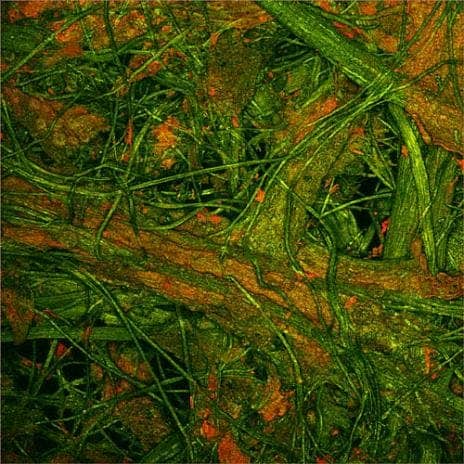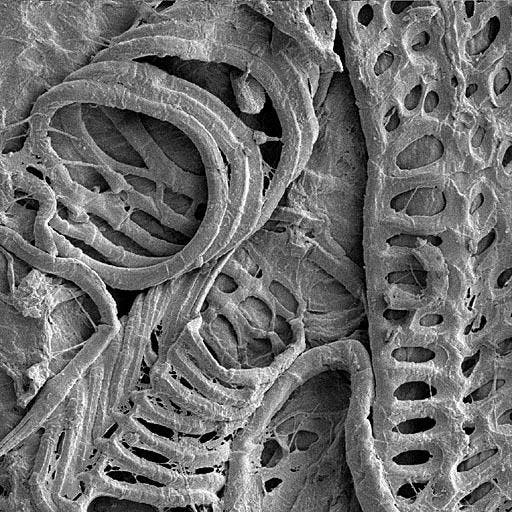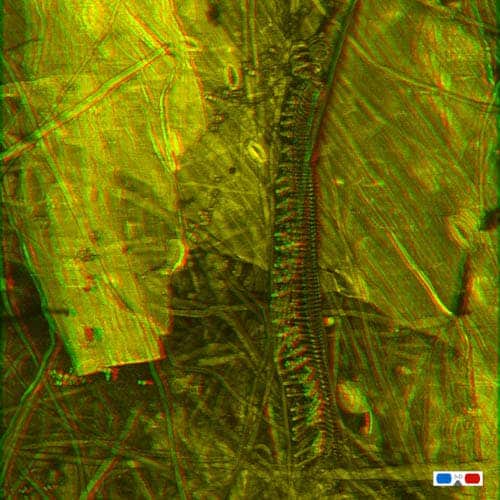
Paper is just paper, right ? Nothing fancy, nothing special, just plain old paper that we see and probably use every single day. Well, for Charles Kazilek at ASU, that statement couldn’t be further from the truth; incredible colours, from orange and purple to vibrant green, amazing textures, all of these were obtained from plain pieces of paper.

There are many hidden surprises in these amazing pictures, which contain dazzling patterns. Charles Kazilek uses a laser scanning confocal microscope to examine and photograph the paper. The lasers highlights any fluorescence that biological material has.
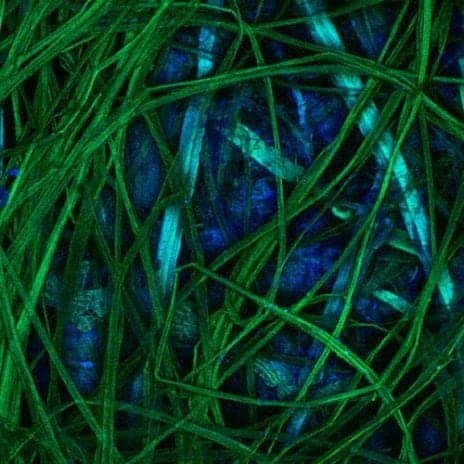
Charles explains the paper project:
“My colleague and collaborator on the Paper Project, Gene Valentine, came to me with a question about paper made from silk rather than plant material. You likely know that almost all paper is made from plant material (cellulose). What you might not know is that a large part of paper strength is the hydrogen bonding that occurs from fiber-to-fiber. More on this is found in the “Cookbook for Papermaking at Home and in the Classroom”.
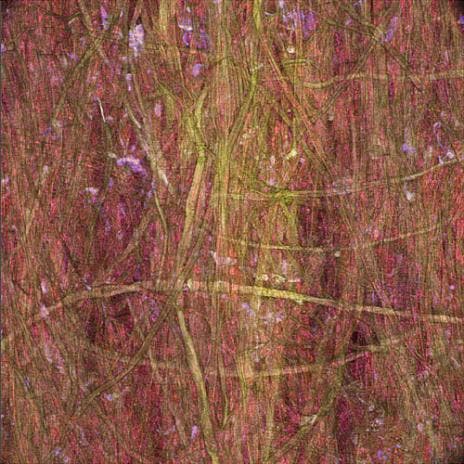
He adds:”Gene had been making paper from silk, which is protein-based and not cellulose-based,” continued Charles. “He wanted to know if silk paper was working the same way as plant material paper at the microscopic level. Papermakers are pretty strict about what they call paper. So the question was if paper made from silk was the same as that of plant made paper?”

According to Dard Hunter, one of the most knowledgeable people on paper:
“To be classed as true paper the thin sheets must be made from fibre that has been macerated until each individual filament is a separate unit; the fibres intermixed with water, and by the use of a sieve-like screen, the fibres lifted from the water in the form of a thin stratum, the water draining through the small openings of the screen, leaving a sheet of matted fibre upon the screen’s surface. This thin layer of intertwined fibre is paper.”
Asked what should be learned from the paper project, Charles explains:
“The most important thing is to realize that this material that is so ubiquitous that it is almost invisible from our daily lives is really important and at the microscopic level amazingly beautiful. The images we show are roughly the size of a period at the end of a sentence. If you take a standard piece of paper you are likely to find a hundred or more beautiful pieces of art in each sheet. If you think about how much paper you come into contact with each day, there are literally thousands of tiny pieces of art passing through our hands.” Truly inspiring !
“The other important part of the Paper Project is to realize that this material is arguably one of the first great inventions of humans,” Charles went on to say. “It has been keeping our history and secrets safe for thousands of years. Today what media can you say will be as good at archiving our history and our thoughts? There is nothing out there.”
“Finally, there is a lot that can be learned with the Paper Project. We did not set out be an educational tool, but you can see from the website there are sections on human vision (how we see 3D), chemistry (how paper is held together), plant anatomy, microscopy, and history (from the history of paper timeline).
The paper project site has some other incredible pictures, and you can also check them out in 3D – astonishing !
Via Paper Project

